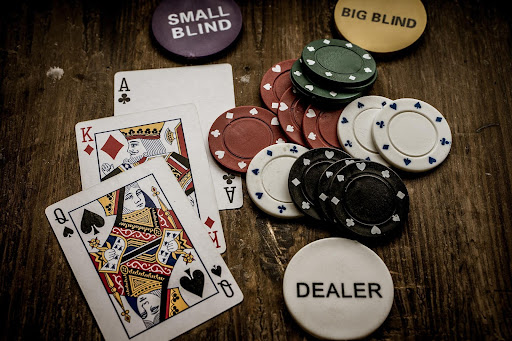How To Set Up Your Poker Home Game: Structure, Supplies, And Poker Rules
Do you love playing poker but don’t always have time to go out and find a game? Or maybe you’d just prefer to play in the comfort of your own home with your friends. If so, this article is a perfect poker guide for you. We will cover everything you need to get started, from deciding what kind of poker you want to play to gathering the supplies and setting the rules of play. Poker rules can vary depending on the game you choose, so it’s essential to understand the basic poker rules, the different variations, and poker etiquette before you start playing.
Poker is an excellent game for social gatherings and can be a lot of fun, even if you’re not playing for money. But if you are planning on hosting a poker game in your home, there are a few things you need to take into consideration first.
Here is a step-by-step guide to setting up your home poker game:
Step 1: Select a poker variation.
The first step is to choose which type of poker you want to play. There are many different variations of poker, so it’s crucial to select the one that best suits your needs. Do you want a fast-paced game with lots of action, or a slower, more strategic game?
It’s also essential to ensure that everyone playing is comfortable with your selected game. If you have any beginners, choosing a more straightforward game such as Texas Hold’em might be a good idea.
Step 2: Decide how many players will be invited.
This step is essential because it will determine how many supplies you need. Most poker games can be played with anywhere from 2 to 10 players, but around 8-10 players is a good number for a single-table tournament. If there are more than 10 players, you will need another table, a deck of cards, and more chips.
Step 3: Prepare the materials needed for playing the poker game.
Knowing how many players will play, you can gather all the necessary supplies. Here’s a list of what you will need:
-
A good quality poker set that includes chips and cards
If you don’t have a poker set, don’t worry – you can easily purchase one online or at your local game store. Just make sure that it has enough chips for all of the players.
-
A comfortable poker table or card table
You will need a place for everyone to sit and play the game, so a good quality poker or card table is essential. If you don’t have a big enough table to accommodate all the players, you can always use a traditional kitchen or dining room table. Just ensure that there is enough space for everyone to sit around comfortably and that the surface is smooth so that the cards can slide easily.
-
A timer
Setting up some blind structure and staying true to your timer is essential when playing in a friendly home poker tournament. Doing this will ensure you know when the next round starts and how long any rebuy period lasts – which can help give you time if someone else takes longer than expected.
Step 4: Set the stakes.
Before you start playing, you’ll need to decide how much money you want to play for. This amount is entirely up to you, but you must ensure everyone is comfortable with the stakes before you begin.
Step 5: Select a game structure.
There are two main types of poker games: cash games and tournament style. In a cash game, each player buys in for a certain amount of money and plays until they either run out of money or want to quit. In a tournament, each player buys in for a set amount and receives a certain number of chips. The goal is to win all the chips by the end of the tournament.
Step 6: Set the blinds.
The blinds are mandatory bets that players must make before any cards are dealt. They stimulate betting and help ensure some money is in the pot to be won. The small blind is usually half of the big blind.
Step 7: Set the rules of play.
Now, it’s time to set the poker game rules. You’ll need to decide a few things:
-
The payout structure: The payout structure is how you will determine who wins the pot. There are two main types of payout structures: fixed payout and pot-limit payout. In a fixed payout structure, the pot’s winner receives a set amount of money. While in a pot-limit payout structure, the pot’s winner gets an amount of money equal to the size of the pot.
-
The buy-ins, rebuys, and add-ons: The buy-in is the amount of money each player must bring to the table to be eligible to play. The rebuy is the amount of money a player must spend to buy more chips when they run out. The add-on is the amount of money a player can spend to receive more chips.
-
The breaks and timeouts: The break is a set amount of time players can take between hands. This privilege allows them to use the restroom, drink, or take a break from the game. The timeout is a set amount of time a player can take between hands, which allows them to leave the table for a short time if needed.
Hosting a poker home game can be a lot of fun. Not only do you get to enjoy the company of your friends, but you also get to test your skills against them. By following these steps, you’ll be well on hosting a successful poker home game.
Visit GGPoker today, and create an account so you can start playing!

